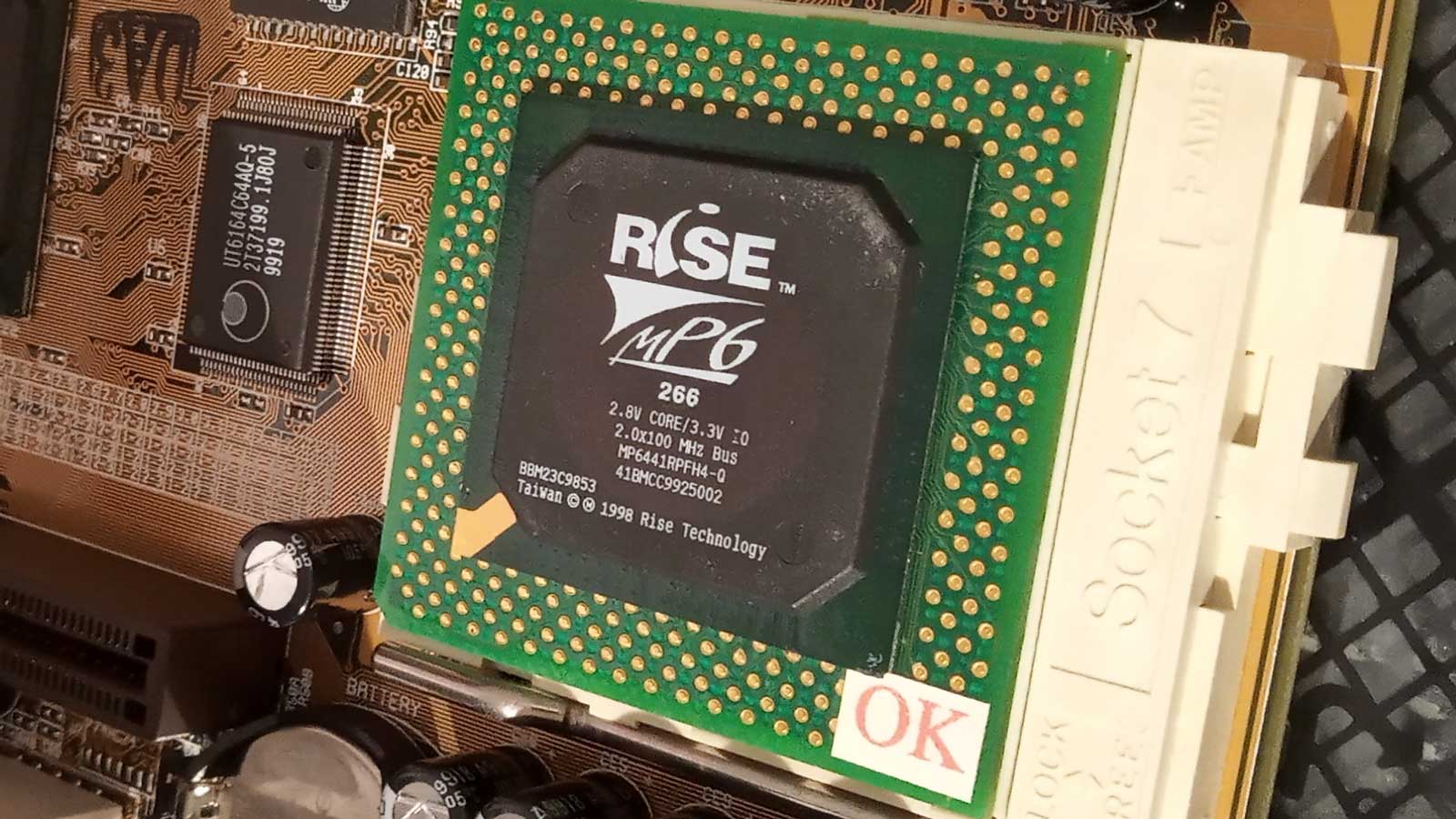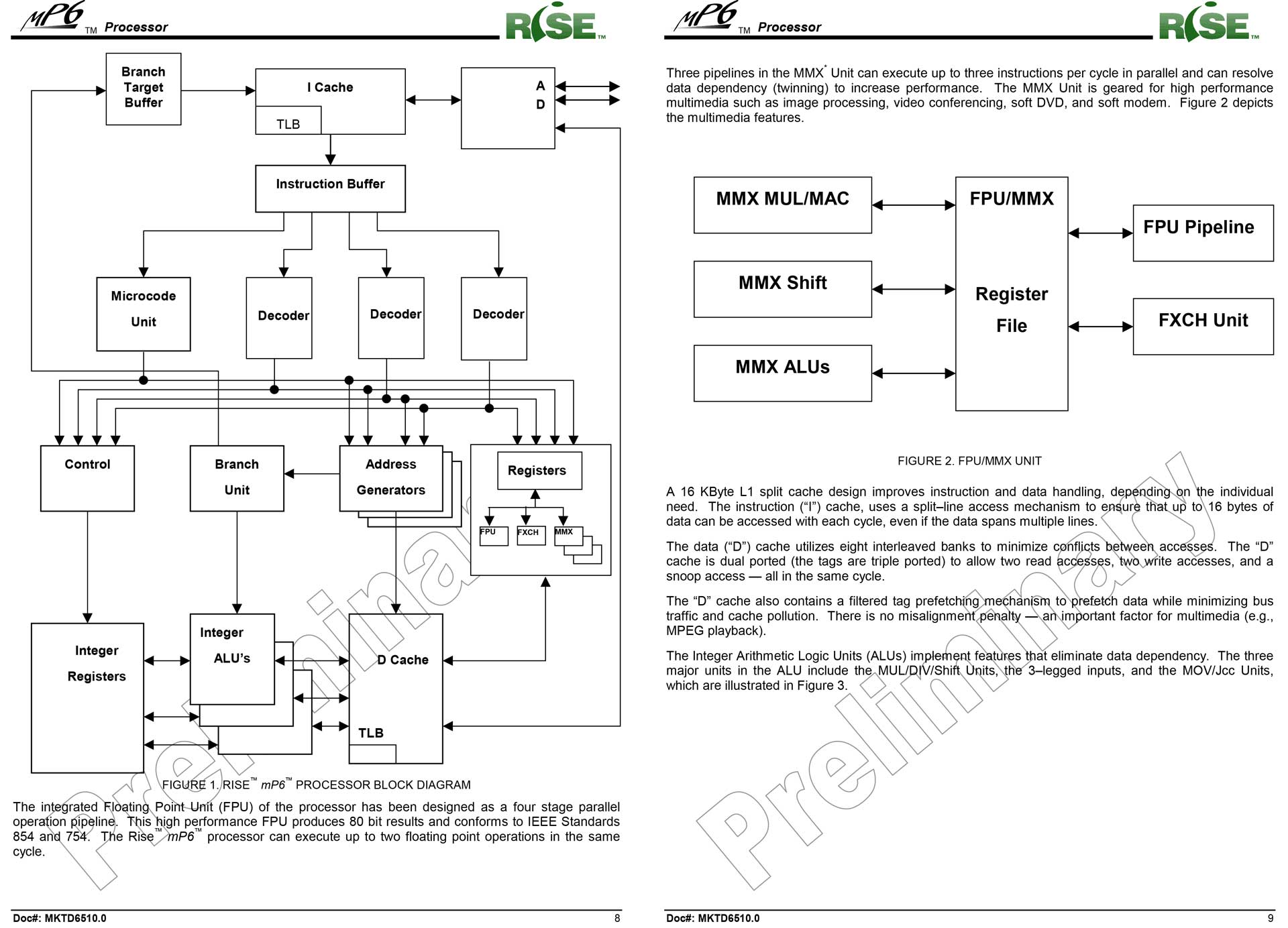Chip collector showcases 'rarest x86 CPU' in their hoard — Rise mP6 266 ticked along at 200MHz in 1998
This CPU launched in 1998 after five years in development, but Rise would exit the CPU business in 1999.

Some images demonstrating one of the rarest x86 CPUs still running have been shared online. We thank CPU collector and silicon lover, konkretor, for this particular retro tech flashback. However, it is probably fair to say that the highlighted Rise mP6 266 wins more points for obscurity than nostalgia. Though already a keen PC builder and tinkerer in 1998, I don’t recall seeing, hearing, or reading anything about this Super Socket 7 and MMX instruction set compatible processor at the time.
Rise MP6I think this is the rarest x86 CPU that you should own as a collector #Retro #cpu pic.twitter.com/IbAcPLJrjdJuly 14, 2025
The main image shows the Rise mP6 266 CPU physically installed on an Asus P5A-B Super Socket 7 motherboard. This Asus board featured the ALi Aladdin V chipset and was a viable platform for the exceptionally broad range of x86 CPU manufacturers there were around at the time. Socket 7 CPUs from Intel (Pentium MMX), AMD (k6, K6-2), Cyrix (MII), and IDT WinChip were all happy to be paired with this AGP2X, 3x PCI, 2x ISA slot motherboard, which also supported overclocking.
Another image from konkretor actually shows the Rise mP6 CPU stats as shown in CPU-Z. This confirms the chip was indeed a Socket 7-compatible one, with a core voltage of 2.832V. Despite the high voltage, by today’s standards, the clock speeds and modest TDP (8.54W) meant passive cooling was usually sufficient during this era.
You may be wondering about the discrepancy between the Rise mP6 266 CPU’s name and the 200 MHz frequency reported by CPU-Z. This reflects an industry naming trend of the era, where chips from Intel rivals were sold with a P-rating, or Pentium-rating, number attached. AMD and Cyrix would also (in)famously use this scheme. In the case of the Rise mP6 266, buyers would be asked to believe that this 200 MHz chip performed on a par with a 266 MHz Intel Pentium…
Rise and fall
We reached out to konkretor about the provenance of their Rise mP6 266 CPU. The story was sadly unglamorous, with the CPU collector admitting the chip was bought “a few years ago from a China eBay account, new old stock, that was the whole story, no special.”
For some further background information about the TSMC-fabbed 250nm Rise mP6 266 CPU, there are few resources, but thankfully, a PDF copy of the processor data sheet for its 333 and 366 MHz brethren can still be found online, as well as a few notes about the short-lived CPU family on Wikipedia.
Precipitated from five years of development, Rise, and its mP6 line, quietly fizzled out before the year 2000 arrived. This will surely have contributed to its scarcity on the used market today, and its purported “rarest x86 CPU” status suggested by konkretor.
Get Tom's Hardware's best news and in-depth reviews, straight to your inbox.
Follow Tom's Hardware on Google News to get our up-to-date news, analysis, and reviews in your feeds. Make sure to click the Follow button.

Mark Tyson is a news editor at Tom's Hardware. He enjoys covering the full breadth of PC tech; from business and semiconductor design to products approaching the edge of reason.
-
mikeebb Many years ago, my first PCompatible (after 10+ years with a TRS80 Model 1) was a 386SX (Dak if it matters). Several years later, I wanted an upgrade but couldn't afford a whole new computer. So I got a Cyrix "486" kit (Intel had real 486s, but nothing that worked on a 16-bit bus like the 386SX had) that alleged to upgrade the 386SX in place. It clipped on - push it down over the 386 and it slid over its pins, apparently put the 386 into permanent reset in some way, and took over (386SX was soldered in). The Cyrix also came with a standard Cyrix '87 coprocessor, which the 386SX had an open socket for. IIRC the upgrade didn't improve much, but it didn't cost much, and didn't make anything worse. The '87 did seem to help a little with spreadsheets. Performance was probably more limited by RAM (I filled the empty RAM sockets a short time later, which probably made most of the observable difference in performance) and hard disk performance anyway, give what was available at the time. At least, it kept it working well enough to last a couple more years, until switching to Windows 98 required a new Celeron (P5) machine.Reply -
John Nemesh MMX...now that's a name I havent heard in a long time...I havent heard that name since oh, before you were born.Reply
(with apologies to Sir Alex Guiness) -
Amdlova Never see that cpu...Reply
I have used pentium, Pentium mmx, cyrix and amd k6-2
The k6-3 was the today 9800x3d (never see one) -
Dr3ams The oldest CPUs I still have are a Pentium 133 from 1995 and an AMD K7 Athlon from 2000. I do have an old PC in my closet, but I'm not sure what hardware is in the case.Reply -
frankens I actually had one of them. I had one installed in my I-opener. Ran amazingly cool. Also installed one on a friend's gateway computer.Reply
They had a demo of one doing a DVD playback being powered by set of aa batteries. *wonders if I still have it* -
CelicaGT I remember these, never saw one in the wild though. That P5A mobo on the other hand was the defacto S7 board, still have one floating around somewhere that I got on RMA. Still have a K6-2 500 somewhere too, and some other Socket 7 examples. Never got my hands on a K6-3 but not for lack of trying.Reply -
Tbonius I have one of those old gold amd processors, it's cool looking but not valuable old. It is in it's original plastic amd box that I suspect might be worth more than the processor.Reply
